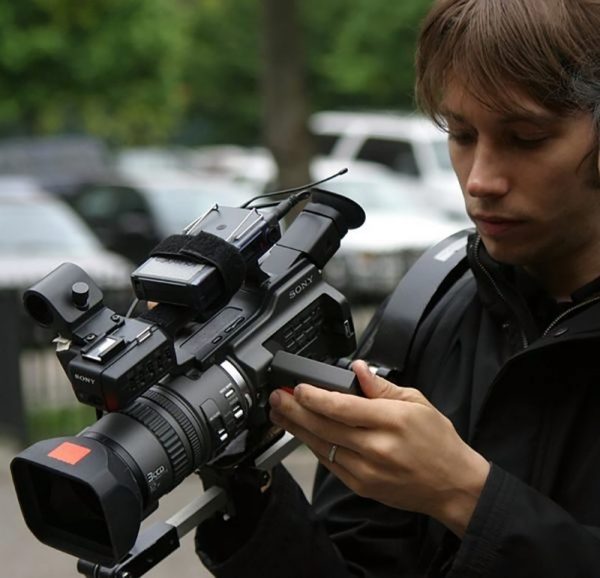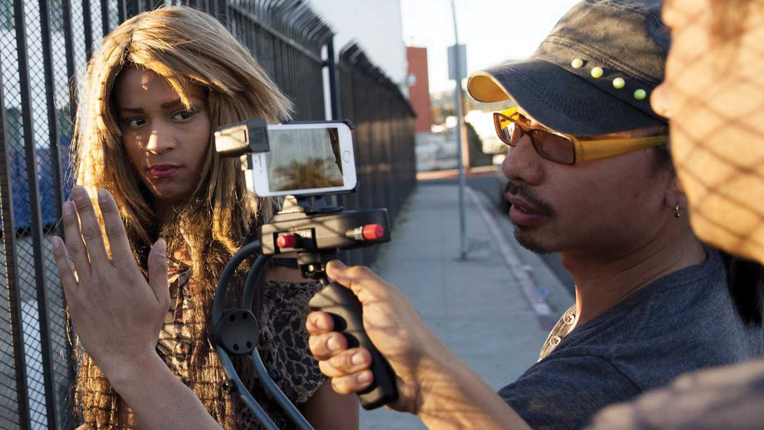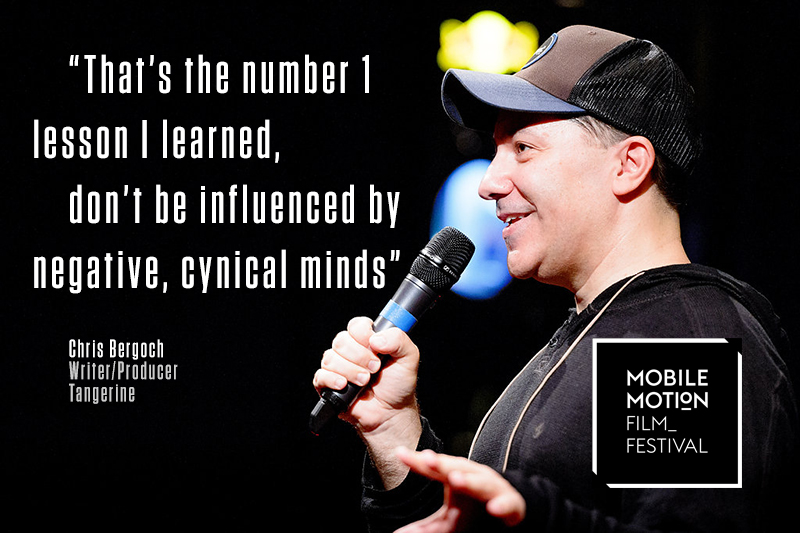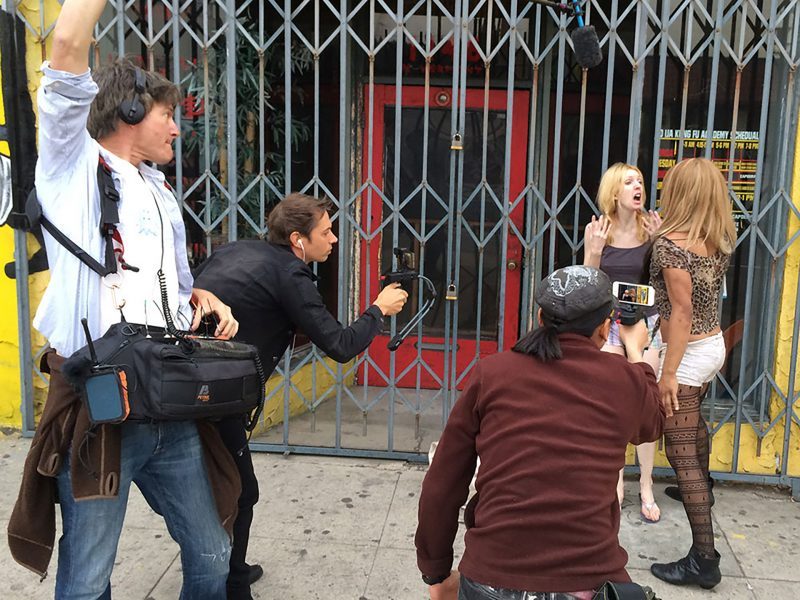How an iPhone Film Shocked the Movie World
This is the story about how an indie filmmaker used an iPhone, an anamorphic lens and FiLMiC Pro to get a major break into the industry. About filmmakers who made a feature length movie against the odds, with a tiny crew and a fraction of most movie budgets.
This is the story about an iPhone movie that shocked the film industry and how the filmmakers finally got the recognition they deserved.
They had 3 iPhone 5s, 3 anamorphic adapters and, before smartphone gimbals even existed, they had a couple of Smoothee stabilisers made by Tiffen.
The director had been making micro budget movies for years, but just couldn’t get that break. And he was at the point where he had had enough of making films for nothing, having to ask the cast and crew to work for free and begging people for equipment.
He Took A Risk & Won
This is a story about how we might never have heard of this major indie director, if it wasn’t for the iPhone. A director whose next film was then nominated for an academy award as well as 17 other major awards. Without the iPhone, this director might be just another struggling indie filmmaker on the fringes of the industry.
But he took the risk on the iPhone and won, creating a stunning movie that was probably the first to put smartphone filmmaking truly on the map. After this movie, smartphone filmmaking could no longer be dismissed as a purely amatuer pursuit.
This is also a story about filmmakers who never gave up, through 20 years without a major break. They kept going, learning their craft and knocking on film industry doors, and for the love of movies and life itself, succeeded through their unrelenting passion and drive.
Sean Baker
Born in 1971, Sean Baker is an American film director, cinematographer, producer, screenwriter and editor. In the year 2000, he released his first feature film Four Letter Words. Produced for $50,000, the film follows a group of young men at an all night party. But the film would reach only a limited audience.
Four years later, he released Take Out, which depicts a day-in-the-life of an illegal Chinese immigrant working as a delivery man. The film premiered at Slamdance Film Festival.
Low budget film tip
You’ll notice a pattern already emerging: the stories are both contained within a single day. Sean Baker later stated the reasoning for doing this is because on a limited budget you can’t afford a costume change for the actors. By containing the story within a timeframe where the characters would wear the same clothes, he saved money.
The budget for Take Out was $3000. This and his next feature Prince of Broadway, were self-funded from money he received from successful puppet sitcoms made for MTV.
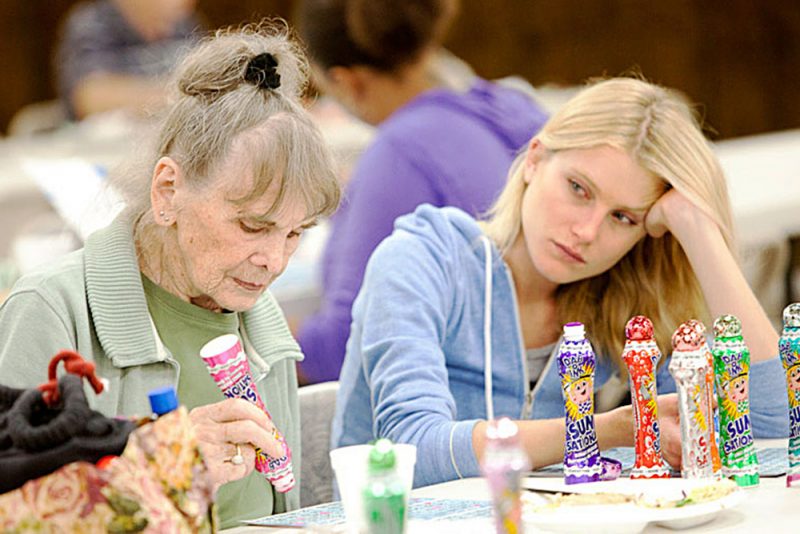
Persistence paid off when Baker received $250,000 in funding for his 4th feature, Starlet. Released in 2012 to critical acclaim, the film was co-written by long-time collaborator Chris Bergoch. However, the film was not a commercial success and no one wanted to fund their next movie.
It looked like Baker’s movie career had hit the buffers. But there was one, small chance – an offer from well-known micro budget indie producers the Duplass Brothers.
The Duplass Brothers
Mark Duplass and Jay Duplass are two brothers who are also actors, directors, producers and writers. The Duplas Brothers found success in the early 2000s coming out of the mumblecore movement. Their breakout film was The Puffy Chair, made for $15,000.
Mumblecore is a subgenre of indie film, mostly shot on very minimal budgets. The genre tends to focus on quirky, naturalistic dialogue with loose plots, centred around 20 or 30 something characters suffering some kind of postmodern angst.
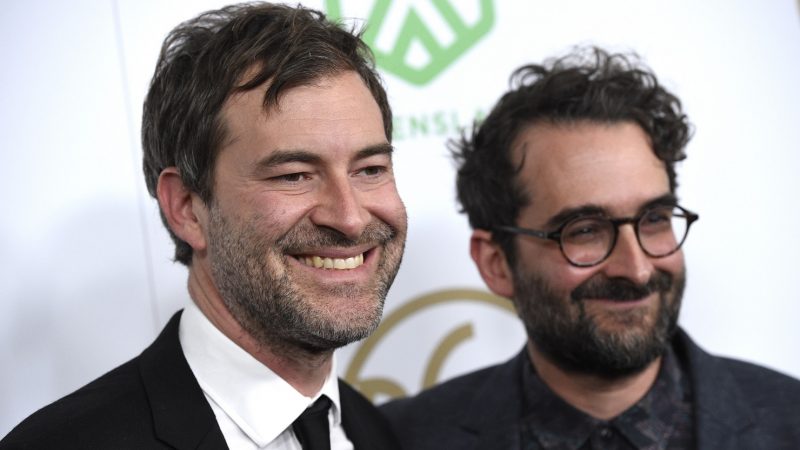
The Duplass Brothers did well enough that they were able to set up their own production company. And after seeing Prince of Broadway, they made Baker an offer: they would fund his next movie, as long as it was shot on a micro-budget.
Baker initially turned them down. He’d already made 4 micro budget features, with each one taking a huge amount of time and energy. Plus, he’d wanted to take a step forward after Starlet, while this seemed like something of a step back.
A Step Back?
As Chris Bergoch explained later, making movies for almost no money can become a trap.
“When you make a movie for such a little budget, the financiers will say, “You just made a movie for a quarter of a million, what do you need a million for, what do you need 2 million for? And you have to explain to them that you can’t call in any more favours. We had people working for free and we just want to pay people properly.”
“The Duplass brothers had a deal with us. They said, “if you guys have an idea that lends itself to a micro budget indie, please come and talk to us.” But the only catch was it would be half the budget of Starlet.” Bergoch
Then Baker saw a way of making this movie that would have been unthinkable a year before.
“He came to me and he was like you’re going to think I’m nuts but… what if we just shoot this on the iPhone? And so the trick was to work out how we could embrace it, rather than look at it as like a negative.” Bergoch
A vimeo channel containing various experimental iPhone video clips had left an impression on Baker. As well, he found some clips of footage using a prototype of an adapter for the iPhone which allowed you to shoot real scope.
Moondog Labs
In film-industry jargon, ‘Scope’ is short for CinemaScope. The term is still widely used by both filmmakers and projectionists and generally refers to any 2.35:1, 2.39:1, 2.40:1, or 2.55:1 frame ratio or the use of anamorphic lensing in general.
Moondog Labs, the company making the adapter, had a Kickstarter running to launch the anamorphic lens for iPhones. Baker contacted the company and told them about his project with the Duplass Brothers. Moondog Labs agreed to send them 3 prototypes of the adapter to try out and these ended up being used to shoot the movie.
“It happened to be that the iPhone 5s had just come out, that was a big technological advancement, and then it just happened to be that there were all these tools that came out in that one particular, perfect moment.” Sean Baker
A recently released app called FiLMiC Pro was also essential in persuading Baker iPhones could be used to shoot a movie in a more professional way. Until FiLMiC Pro came along, there was no way to easily control focus, white balance or exposure. It also allowed Baker to shoot at 24fps and boost the bitrate to increase the quality of the 1080p footage.
Smoothee
The last bit of kit employed was a thing called a Smoothee made by Tiffen. Motorised smartphone gimbals hadn’t yet been invented. The Smoothee worked simply by balancing the iPhone on the end of a curved counterweight.
They were notoriously difficult to use, swaying left and right. If you didn’t control the swaying, your footage looked like it was shot onboard a boat. But the iPhone 5s had no inbuilt stabilisation and this was the best option going at the time.
Although Baker considered shooting on a DSLR, he decided not to jump on that particular bandwagon. He wanted his 5th micro budget feature to stand out from the crowd. As well, there would be extra costs involved using a DSLR and shooting on the iPhone would enable them to pay the cast and crew, rather than ask favours as on their previous micro budget films.
Test Screening at Technicolor
Baker made some tests with the Moondog Labs anamorphic and persuaded Technicolor to let them show the clips on one of their screens. The Duplass Brothers were invited, along with the other investors in the film. Everyone was amazed to see the quality of video from the iPhone 5s, even when blown up to a cinema screen size.
Finally, Mark Duplass gave them the thumbs up, saying “let’s do this, it’s like punk rock”.
Now We Just Need a Story
Now that Baker had the method, he and his co-writer Bergoch needed a story. Here he explains how they found inspiration.
“We met at NYU and we’ve been collaborating ever since (for about 20 years now). And in 2009 MTV did a series with us called Warren the Ape. It was a spin-off of a show called Greg the Bunny. It’s become a cult thing in the US.
“That brought us to L.A. in 2009. And we were living right on the corner of this place called Donut Time (since closed). It’s this infamous intersection. It’s a very down-and-dirty area.
“There were prostitution and drug deals going down and always some sort of fight happening, so that was very intriguing to us as a possible place to set a story.” Bergoch
For eight months, Baker took to the streets with his team to get to know the area and its people. He eventually came across aspiring trans actor Mya Taylor, who plays Alexandra.
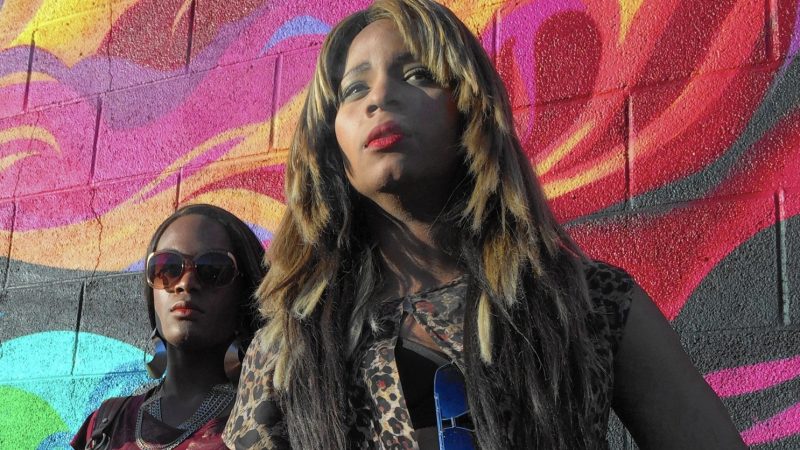
Baker and Bergoch listened to the stories told to them by the people who would end up playing the main characters in the movie. One of these stories then became the basis for the story of Tangerine.
A Day In The Life
The story follows a transgender sex worker who discovers her boyfriend and pimp has been cheating on her. The movie takes place over one 24 hour period, again following that low budget filmmaking trick to avoid the extra complication and cost of costume changes.
It might sound odd that costumes can make a difference to the cost. But extra costumes have to be looked after by someone, who also has to keep track of when a costume change should take place, as well as the extra cost of buying the costume itself.
Embracing iPhone Filmmaking
At the time, shooting a movie on an iPhone was a big risk and very much looked down on, to the point of ridicule. Chris Bergoch explains how they overcame this negative aspect of shooting a movie on an iPhone:
“And so the trick was to work out how we could embrace it, rather than look at it as like a negative.
“Instead of looking at it as ‘oh this is just going to be a film shot on an iPhone’, [rather] ‘what can we do with the iPhone that we wouldn’t be able to do with a bigger rig?’
“We kept it a secret, because when we talked to friends about this, they kind of discredited us. They would just roll their eyes, going, ‘Oh, that’s not a real movie. No one is going to take you seriously if you shoot this thing on an iPhone. It’s going to be a glorified YouTube video.’
“But you can’t let people influence you. That’s the number 1 lesson I learned. Don’t be influenced by negative, cynical minds.” Bergoch
Through the Grapevine
Through Mya Taylor, Baker met Kiki Rodriguez, a fellow trans actor who would be cast as the volatile yet lovable Sin-Dee. As soon as he saw them together, Baker knew he had a movie.
Taylor and Rodriguez were close friends with the trans women who worked the area and wanted this story to be told. Before agreeing to be in the movie, Rodriguez insisted they show the harsh reality of what goes on in these characters’ lives. She also insisted they make it funny for the women who make their living as sex workers.
“In this day and age, everybody’s taking selfies, so it allowed them to be very comfortable. They were able to step right in front of those iPhones and they weren’t even there. There was no nervousness that sometimes it takes to get over for the first time actors.” Bergoch
Filming
Principal photography began in Hollywood on Christmas Eve 2013 and wrapped on January 18, 2014.
“We were moving so fast because we had such a small crew.”
Shooting style
Sean Baker co-DP’d the movie with Radium Cheung, who had DP’d his previous film, Starlet. But Cheung couldn’t be there from the start of the shoot as he was working on the TV series The Americans. For that reason, Sean Baker had to shoot alone at the start of filming, until Cheung showed up.
“Our crew on Tangerine was maybe like 6 or 7 people. We all wore multiple hats.
“We couldn’t shoot on film like our dream would be but what we could do was fix the iPhone to a fishing rod and use it as the poor man’s crane shot.” Bergoch
Baker, previously a messenger cyclist in New York, took to shooting tracking shots using his bicycle. With one hand holding the iPhone on the Smoothee, and the other hand steering the bike, Baker managed to achieve the film’s distinctive sweeping camera shots. These shots simply wouldn’t have been possible using more traditional cameras, even with a bigger budget.
Good Old Sound Recording
While filming with iPhones was unconventional and led to a very fluid, literally mobile style of cinematography, they recorded sound in a very conventional way.
“If we had just used the iPhone mic it would have been a mess.
“We had a professional sound guy named Jeremy Grody. This guy’s a mad man. Does sound the traditional way. Mostly booms. Also wireless lavs. And we’re slating every shot and doing sound the good old fashioned way.” Bergoch
In one scene near the end of the movie, they had about 10 characters each individually mic-ed.
Production Challenges
Filming a micro budget movie comes with many challenges. It usually means working with minimal or only available lighting. For Tangerine, Cheung brought portable fill lights to use for night shots.
“We just found places where there was available light. We based a lot of the locations on what the lighting was like at night. But that’s what gives it a cool vibe I think.”. Bergoch
A lot of the film was shot during what’s known as “magic hour. This is the time when the sun is setting or rising and the shadows are long. This, combined with shooting in Los Angeles created the orange look of the film. And this led to them calling the film Tangerine.

Baker and his team had 3 iPhones (2 A and B phones) and 1 as a backup, in case anything went wrong with the 2 main phones.
“We shot on the iPhone with the h.264 (1080p), that gets transformed into a prores 224. We edited on Final Cut 7. DaVinci Resolve for sprucing up of the colour.” Bergoch
Memory
The iPhone5s had 64gb internal memory which, when shooting the maximum 1080p resolution, allowed them to go a whole 12 hour shooting day without ever running out of space.
“Battery is the only thing we had to worry about. So we had a lot of external power packs.
“We had permits. For example Donut Time was a central location in the film, obviously you have to get permission from them. We didn’t have a lot of money to give them. So they let us shoot there, but the only provision was we couldn’t close the store. So every customer that comes in and is buying doughnuts, those are real people…” Bergoch
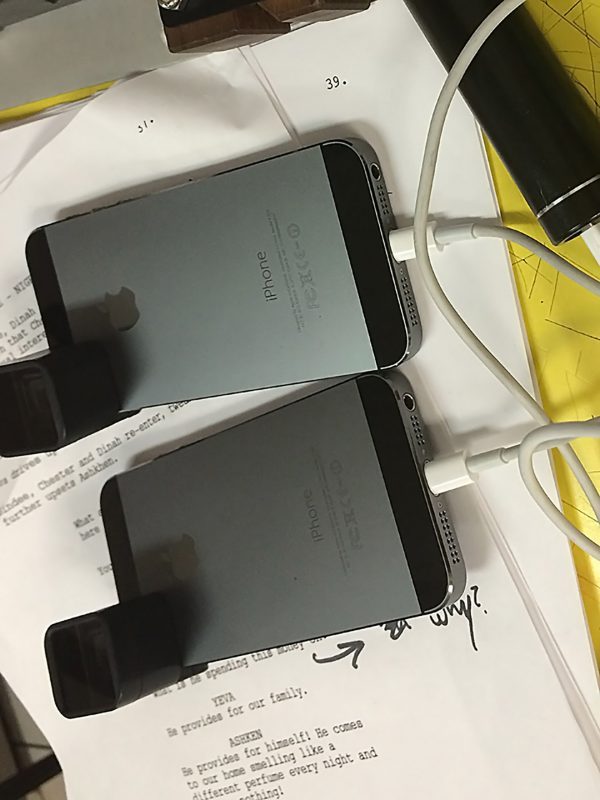
After every take, as soon as Sean Baker said cut, they had to run out and catch the customers to get them to sign release forms. Sometimes people didn’t want to sign and then that footage couldn’t be used.
Post Production
There was only a limited amount of money available for post production, so Baker edited the film himself. For the look of the film, Baker decided to exaggerate the colours, creating a more saturated look. He also added a film grain to give the movie more of that film look character.
But Baker didn’t work completely alone, as they also brought in a professional colourist to work on the final look.
Sundance
Sundance is one of the most important film festivals in the world. For indie filmmakers, it’s probably the most important of all. If your film gets selected for Sundance you are far more likely to sell the picture and have a successful theatrical release. That said, nothing is guaranteed.
Baker’s Tangerine appeared in a section called Next, intended for future filmmakers. Which was pretty ironic, considering he’d been making movies for over 2 decades.
Sean Baker says they were expecting to see a number of iPhone films at Sundance, assuming that the time was right. The quality was good so the presumption was more filmmakers would be using them.
As it turned out, Tangerine was the only film shot on the iPhone that year. They were so anxious at getting a negative reaction about the camera used, they decided not to tell anyone. Instead, the film was listed as normal without any mention of the iPhone.
But in the end credits, Baker had decided to reveal the truth with a title which said “shot on iPhone 5s”. As the final credits rolled, critics and industry bigwigs couldn’t believe their eyes.
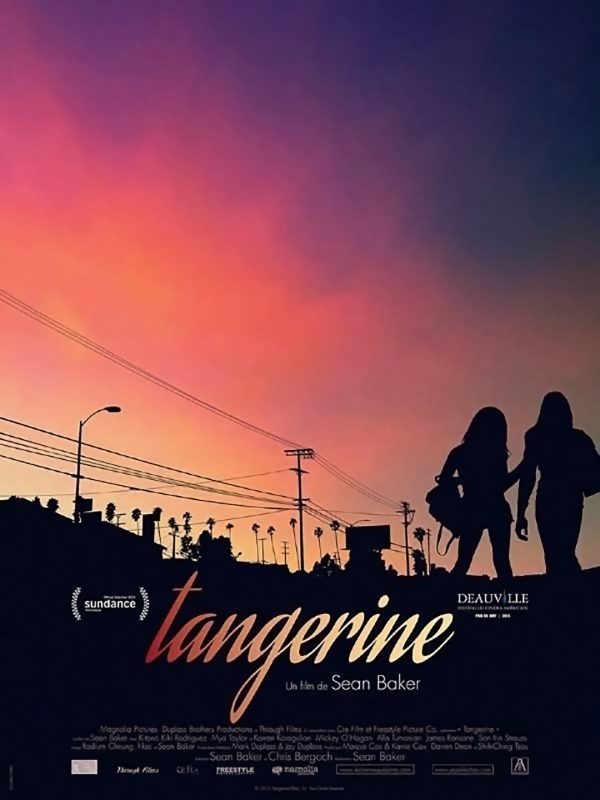
Shockwaves
The shockwaves reached far and wide and fast. Like Chris Bergoch some months before, many in the industry simply couldn’t believe the movie was shot on a phone.
These days, we’re all used to the idea of professional quality video created by smartphones. But in 2015, this came as a complete shock to critics and movie industry professionals.
The film had a limited release on July 10, 2015, through Magnolia Pictures, receiving critical acclaim for its screenplay, direction, performances and portrayal of transgender individuals. The film also took almost $1m in ticket sales, ten times its $100k budget.
Tangerine truly was the film which inspired 1000s of filmmakers to pick up their phone and start shooting. Sean Baker and his team had proved once and for all: it was possible to make a professional level movie with an ordinary iPhone.
Learn More as a Member
By becoming a member on Patreon you can watch Chris Bergoch’s full talk on how they made Tangerine. There’s also 5 episodes of our smartphone-shot Amazon Prime series Silent Eye, including a “making of” podcast for each episode and all kinds of other downloads and smartphone filmmaking resources.
Big thanks to all the new members who joined us on Patreon recently.
Simon Horrocks
Simon Horrocks is a screenwriter & filmmaker. His debut feature THIRD CONTACT was shot on a consumer camcorder and premiered at the BFI IMAX in 2013. His shot-on-smartphones sci-fi series SILENT EYE featured on Amazon Prime. He now runs a popular Patreon page which offers online courses for beginners, customised tips and more: www.patreon.com/SilentEye


